Best Cactus for Indoors
Looking to add some desert charm to your home without the maintenance headaches? Indoor cacti are perfect for busy plant lovers who want greenery. These resilient plants bring texture and character to any space while requiring minimal attention.
The best cacti for indoor growing include Star Cactus, Bunny Ears Cactus, and Mammillaria varieties like “Ginsa Maru.” These smaller species adapt well to indoor conditions and don’t need the intense light that larger desert cacti require.

Column Cactus (Cereus uruguayanus) is an excellent choice if you want something taller, growing 3-6 feet indoors with attractive blue-green stems.
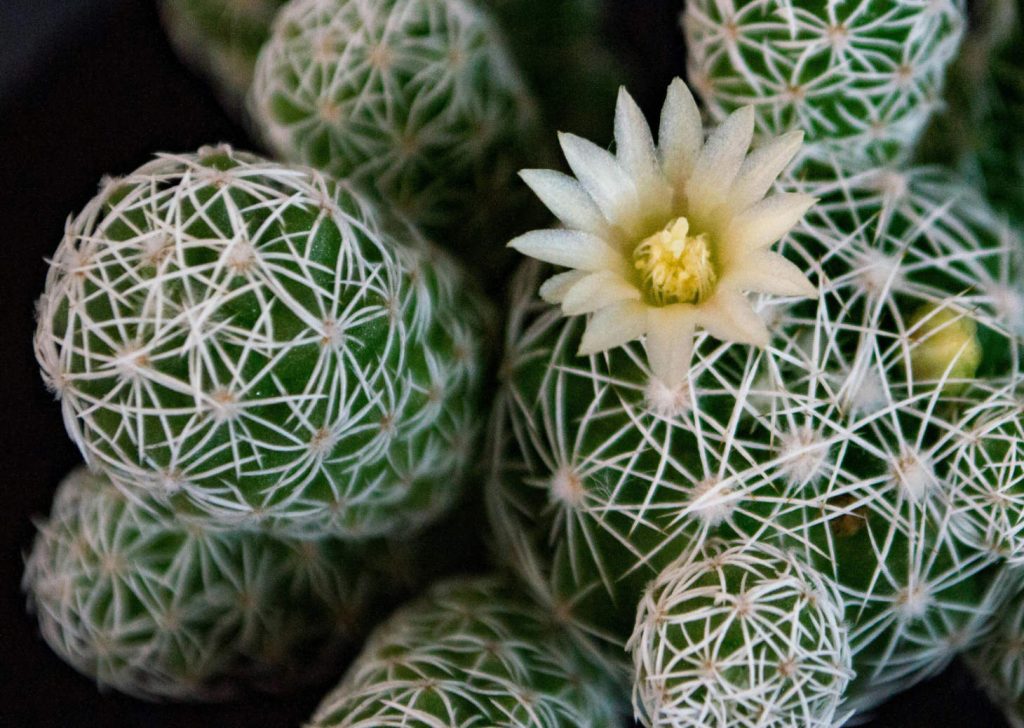
Key Takeaways
- Small varieties like Star Cactus, Bunny Ears Cactus, or a Mammillaria are ideal for indoor growing with limited space and light.
- Indoor cacti are low-maintenance plants needing infrequent watering, making them perfect for busy plant owners.
- Choose the right container with drainage holes and place your cactus where it receives several hours of bright, indirect sunlight daily.
Choosing the Right Cactus for Your Home
Finding the perfect cactus for your indoor space depends on your living conditions, personal style, and how much care you’re willing to provide. The right cactus can thrive for years with minimal attention while adding unique character to your home.
Factors to Consider
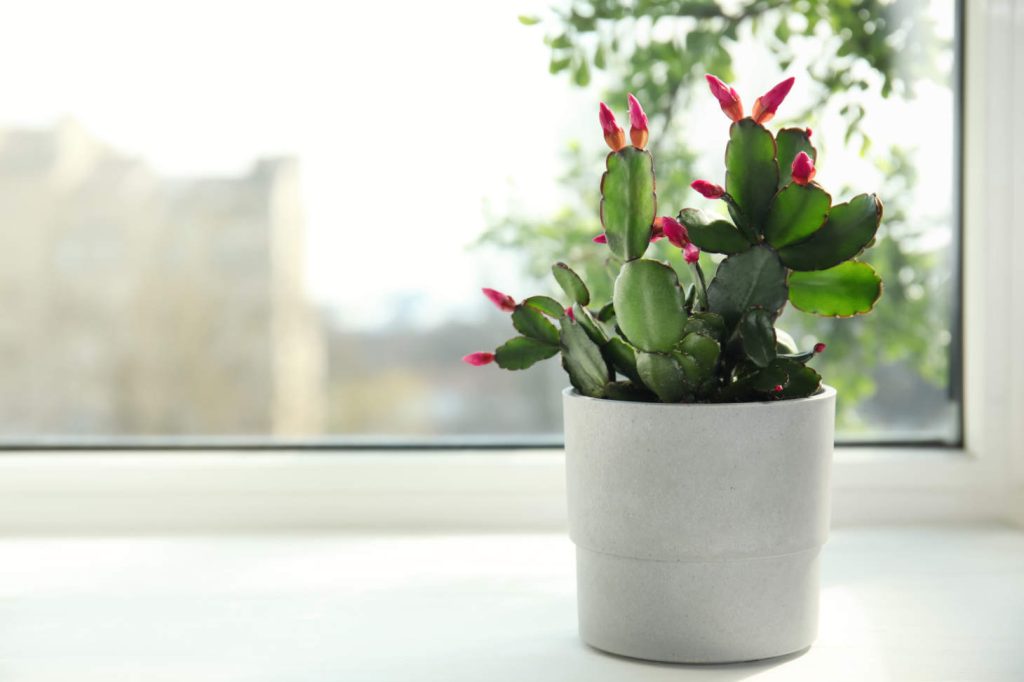
Light availability is the most crucial factor when selecting an indoor cactus. Most cacti need bright, indirect sunlight for at least 6-8 hours daily. South or west-facing windows typically provide ideal lighting conditions. If your home lacks natural light, consider species like Schlumbergera (Christmas cactus) that tolerate lower light.
Temperature stability matters too. Most indoor cacti prefer temperatures between 65-85°F (18-29°C) during the day and slightly cooler at night. Avoid placing them near drafty windows or heating vents.
Space constraints will influence your choice. Some cacti remain small for years, while others can eventually outgrow their locations. Consider both current size and mature growth potential.
Your experience level should guide your selection. Beginners should start with forgiving varieties like Barrel cactus or Bunny Ears before attempting more sensitive types.
Popular Indoor Cactus Types
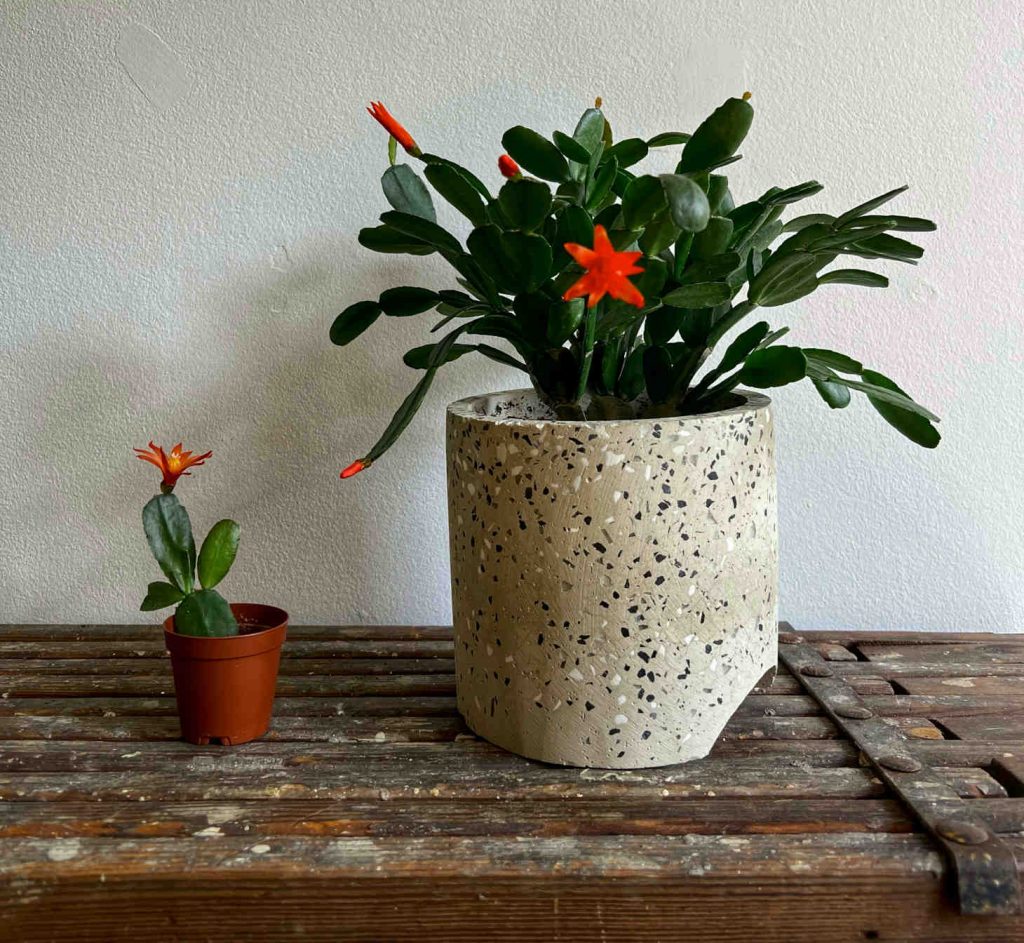
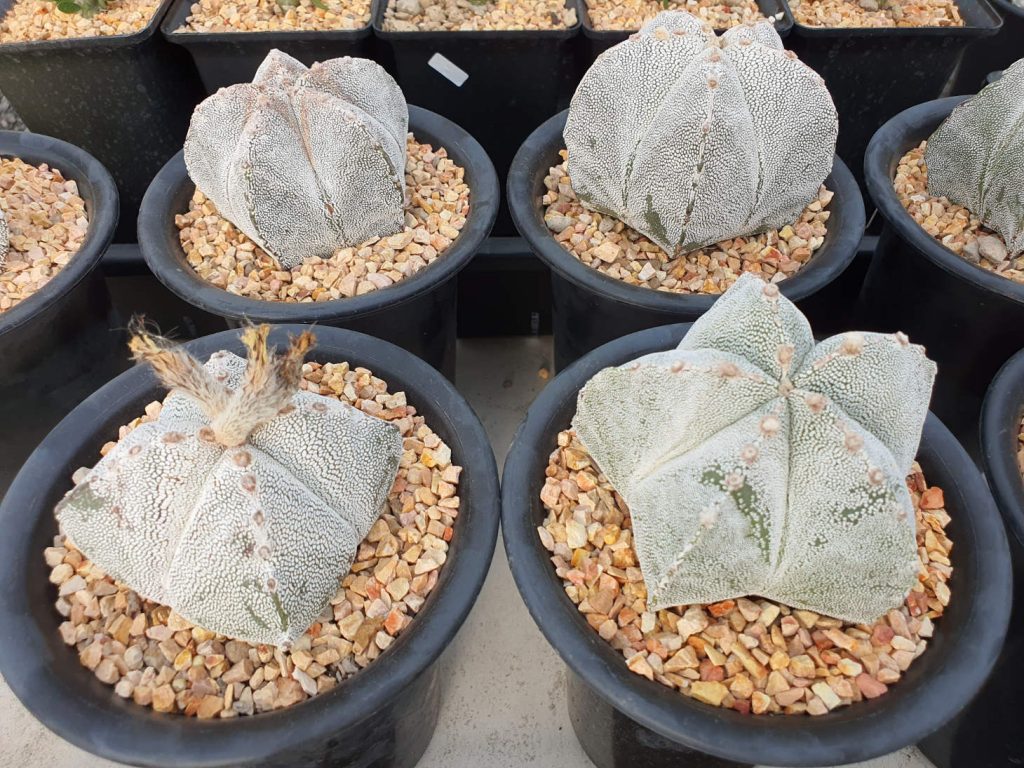
Schlumbergera (Christmas Cactus) blooms during winter holidays with stunning pink, red, or white flowers. Unlike desert cacti, it requires higher humidity and more frequent watering.
Astrophytum myriostigma (Bishop’s Cap) features a distinctive star-shaped form covered with tiny white dots. This slow-growing cactus can grow up to 12 inches indoors and even larger under optimal conditions.
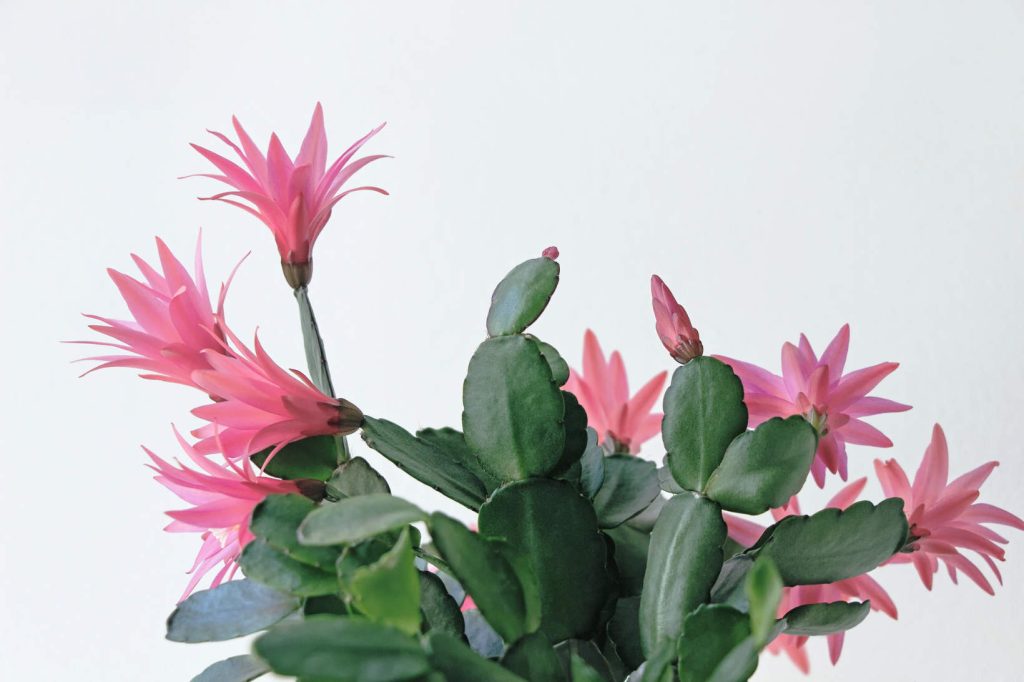
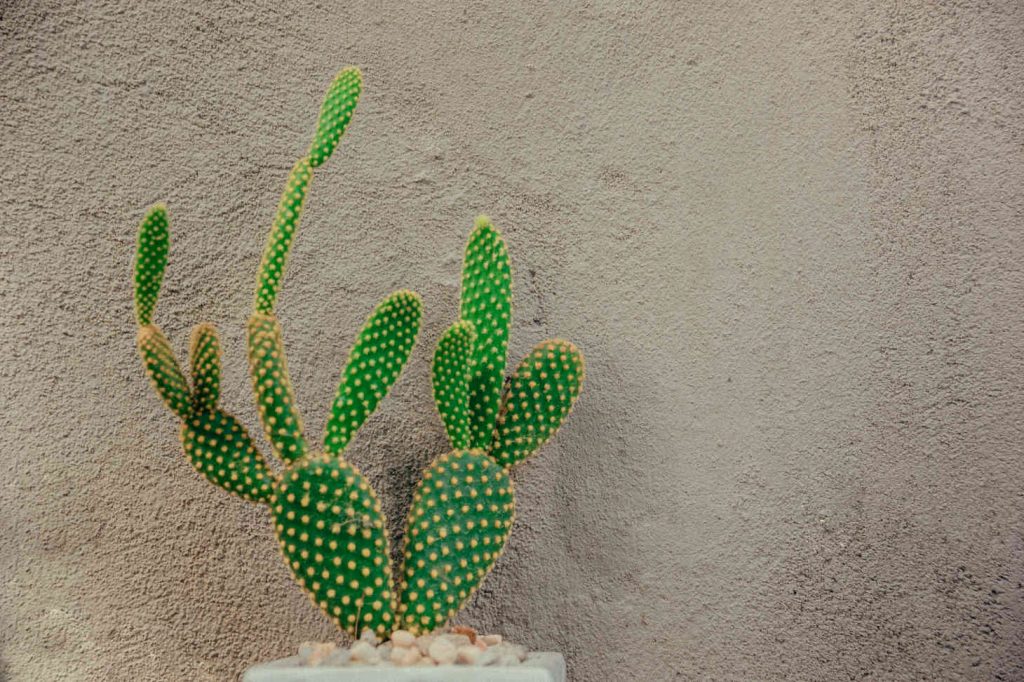
Hatiora gaertneri (Easter Cactus) produces vibrant red or pink flowers around spring. It prefers bright indirect light and more moisture than desert varieties.
Opuntia microdasys (Bunny Ears Cactus) has distinctive pad-shaped segments covered with clusters of glochids, which are tiny, barbed bristles. These glochids are often yellow or white, giving the plant a polka-dotted appearance. It’s hardy and forgives occasional neglect.
Cacti Sizes and Growth Habits
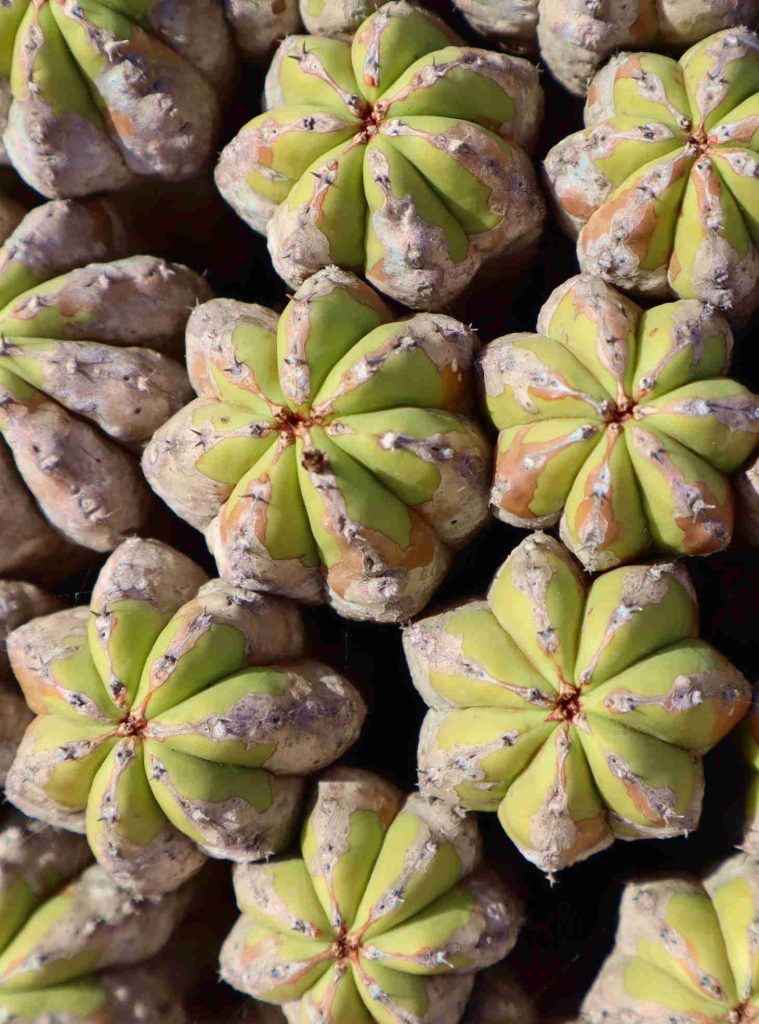
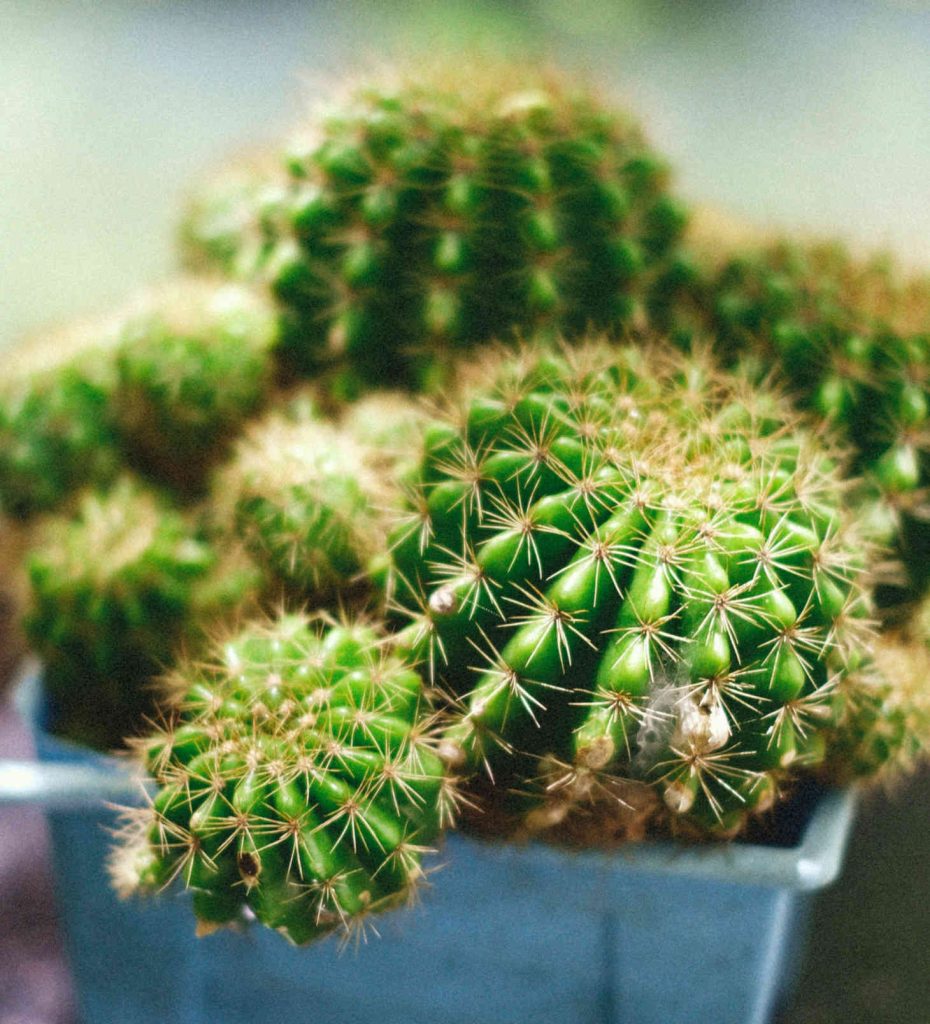
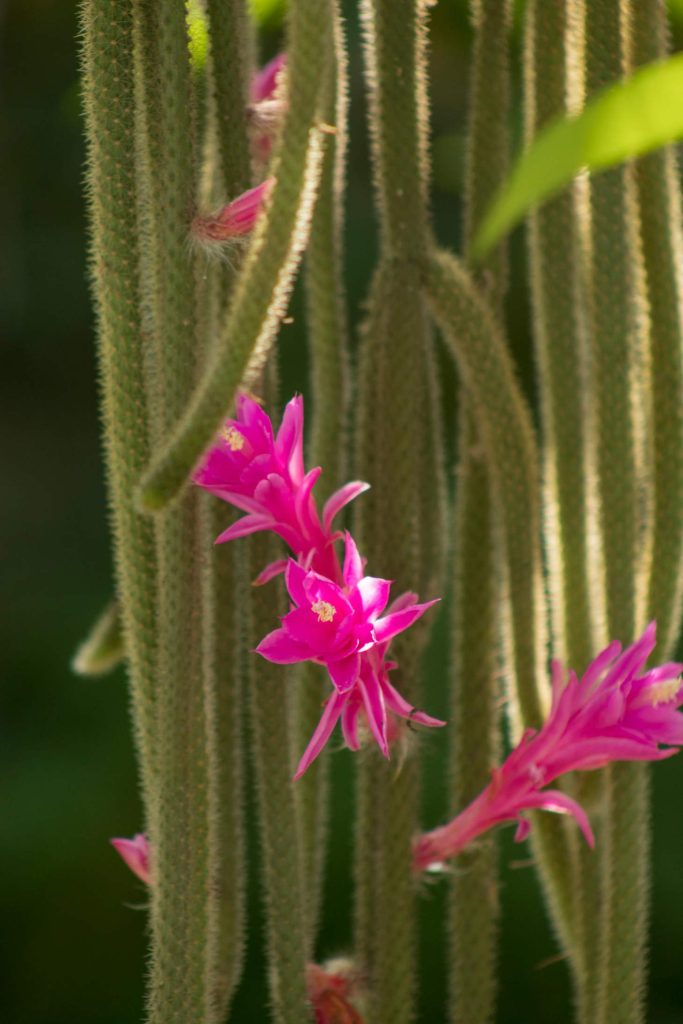
Small cacti like the Star Cactus (Astrophytum asteria) grow slowly and rarely exceed 3-4 inches, making them perfect for windowsills or desks. Their compact size allows for creative arrangements in small decorative containers.
Medium-sized options include the Barrel Cactus, which maintains a manageable round shape for years before reaching its full potential. These work well as standalone specimens on side tables or shelves.
Trailing varieties like Rat Tail Cactus (Aporocactus flagelliformis) develop long, hanging stems that can reach several feet. They’re ideal for hanging baskets or high shelves where their dramatic growth can be showcased.
Column-type cacti grow upright and can eventually reach impressive heights. Place these in corners or areas with vertical space to accommodate their growth pattern.
Match your cactus’s growth habit to your available space for a display that will remain appropriate and attractive as the plant matures.
Common Indoor Cactus Species
Indoor cacti add beauty to your home while requiring minimal care. The following species are popular choices that thrive in indoor environments and offer unique features that make them stand out from typical desert cacti.
Christmas Cactus (Schlumbergera Bridgesii)
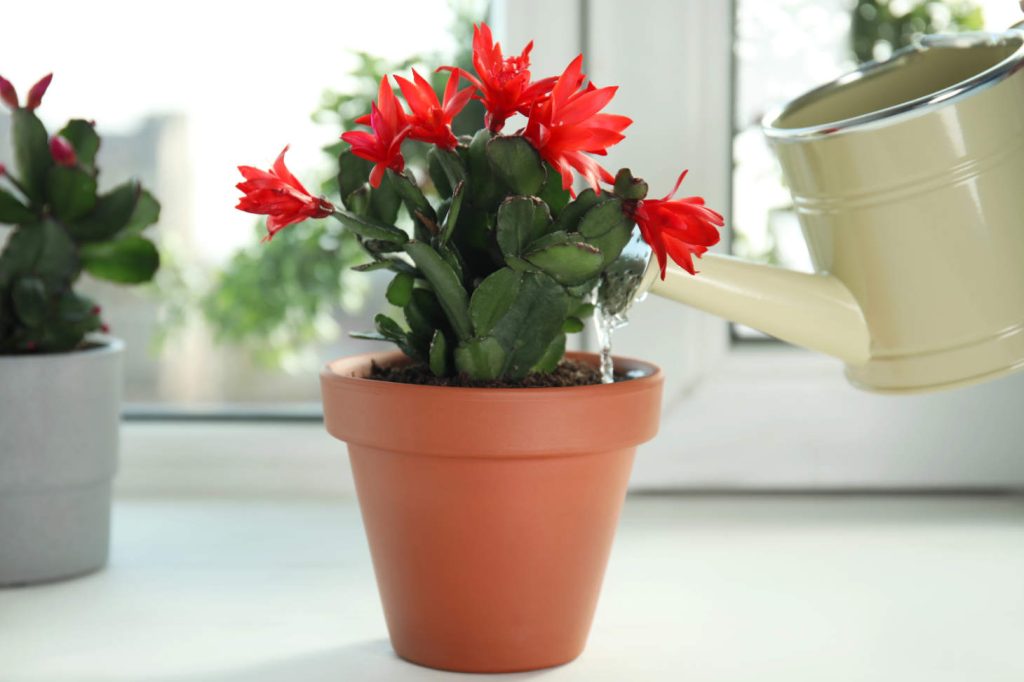
The Christmas Cactus gets its name from its winter blooming period, typically around December. Unlike desert cacti, this species is native to Brazilian rainforests and prefers indirect light.
You’ll recognize a Christmas Cactus by its flat, segmented stems that are pendulous or trailing. The stunning flowers appear at the ends of these segments in shades of pink, red, white, or purple.
This cactus needs more water than desert varieties since it naturally grows in humid environments. Keep the soil slightly moist during growth periods and provide higher humidity. During fall, reduce watering and give it 12-14 hours of darkness daily to encourage those beautiful holiday blooms.
Easter Cactus (Hatiora Gaertneri)
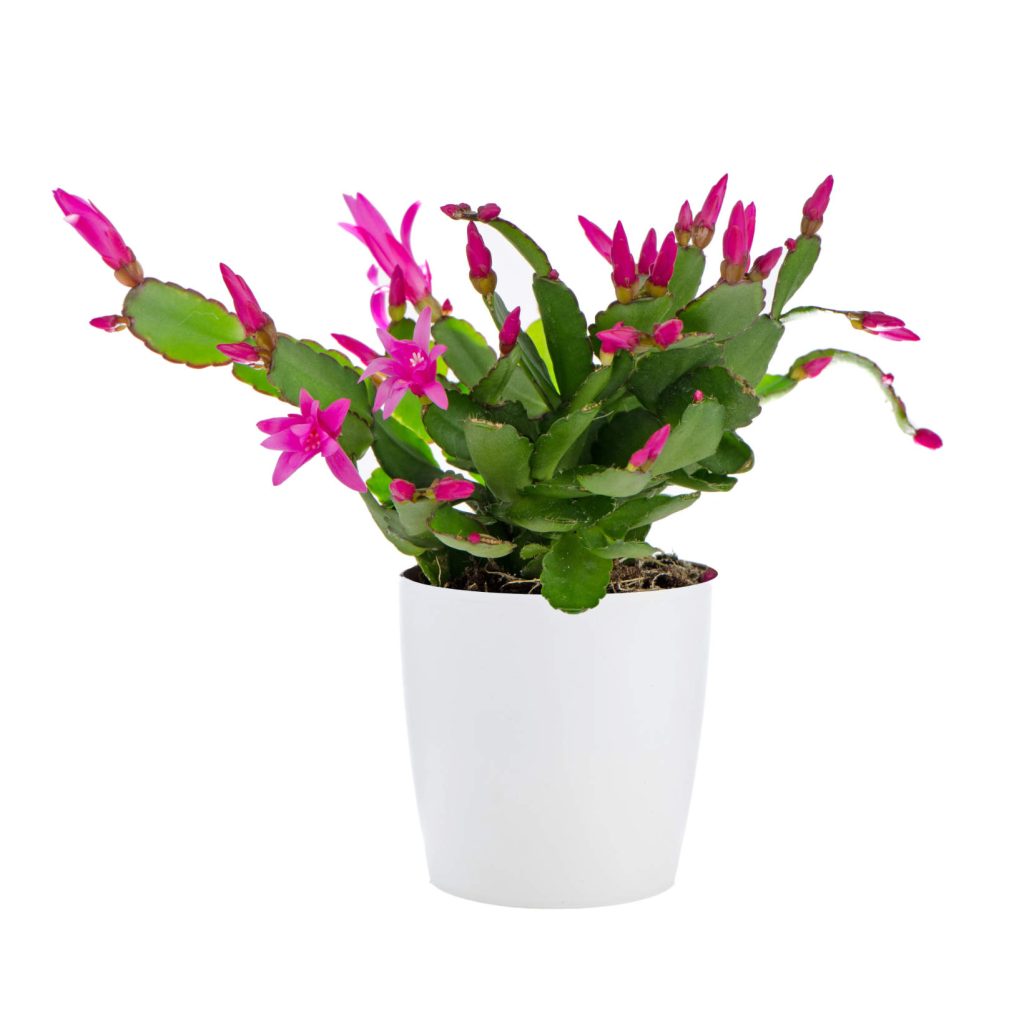
Easter Cactus, as the name suggests, typically flowers around spring. Its star-shaped blooms in vibrant red, pink, or orange make it a festive addition to your home during the Easter season.
Like its Christmas cousin, Hatiora gaertneri has flat, segmented stems. However, you can tell them apart by looking at the segments. Easter Cactus has rounded edges with small bristles, while Christmas Cactus has more scalloped edges.
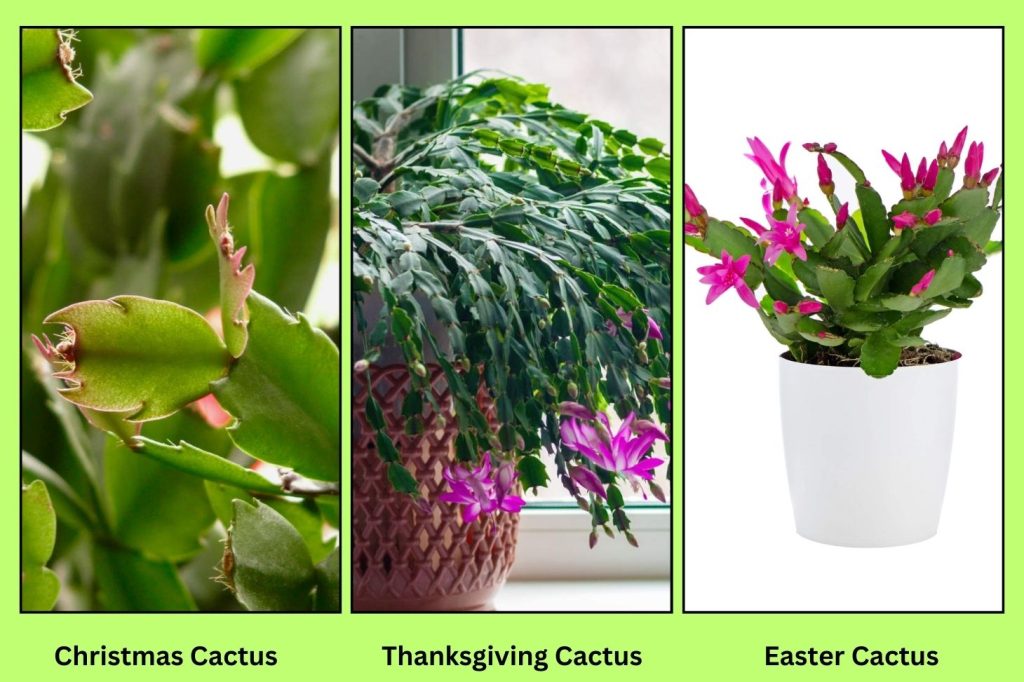
This Brazilian native prefers bright, indirect light and temperatures between 60-70°F. Water thoroughly when the top inch of soil feels dry. During winter, reduce watering to encourage spring blooming. Easter Cactus appreciates higher humidity than desert cacti do.
Star Cactus

The Star Cactus earns its name from its distinctive star-shaped form with typically 5-10 pronounced ribs. Its surface is covered with tiny white dots that give it a unique, almost frosted appearance.
This slow-growing Mexican native typically reaches an average height of 4 to 6 inches indoors, with a maximum height of 12 inches under ideal conditions, making it perfect for windowsills or small spaces. The Star Cactus produces yellow flowers at its crown during the spring and summer months.
You should plant your Star Cactus in well-draining cactus soil and place it in bright light. Water sparingly, allowing the soil to dry completely between waterings. In winter, reduce watering even further to prevent root rot. This hardy cactus tolerates dry indoor air well, making it an excellent low-maintenance choice.
Frequently Asked Questions
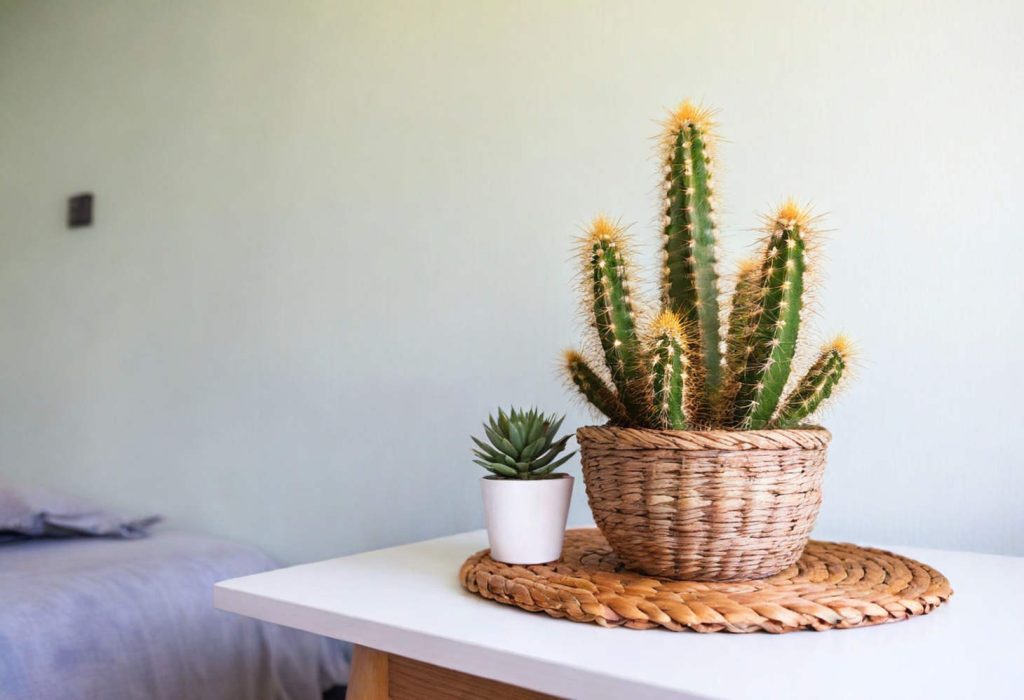
Growing cacti indoors raises many common questions about species selection and care requirements. Here are answers to help you succeed with your indoor cactus collection.
What types of cacti are best suited for indoor environments?
Several cacti thrive indoors where conditions are stable. The Christmas Cactus (Schlumbergera) adapts well to typical home environments and produces colorful blooms.
Golden Barrel Cactus (Echinocactus grusonii) can grow up to 3 feet tall and 2 feet wide indoors, depending on care conditions. It has a distinctive round shape. It grows slowly, making it perfect for long-term indoor cultivation.
Bunny Ears Cactus (Opuntia microdasys) features flat, oval pads that resemble rabbit ears. This cactus can grow up to 3 feet tall and 5 feet wide, adding a unique texture to your indoor garden.
How do I care for a cactus in an area with low natural light?
In low-light conditions, position your cactus as close to windows as possible. East or west-facing windows typically provide adequate indirect light.
Consider supplementing with grow lights during winter months when natural light decreases. LED grow lights with blue and red spectrum can help your cactus thrive.
Rotate your cactus regularly to ensure all sides receive light. Reduce watering in low-light areas since plants use less water when receiving less light.
Which species of cactus are recommended for beginners to grow indoors?
The Barrel Cactus is ideal for beginners due to its resilience and straightforward care needs. It forgives occasional neglect and clearly shows when it needs water by slightly shriveling.
Moon Cactus (Gymnocalycium mihanovichii) offers bright colors and requires minimal maintenance. Its compact size makes it perfect for small spaces.
The Prickly Pear (Opuntia) is another beginner-friendly option. It grows slowly indoors and can tolerate varied conditions.
Can you suggest some small cactus varieties that thrive indoors?
Thimble Cactus (Mammillaria gracilis fragilis) remains tiny, typically grows to a height of 2 to 4 inches, and can reach up to 6 inches under ideal conditions. It forms attractive clusters and occasionally produces small flowers.
Bishop’s Cap (Astrophytum myriostigma) can grow up to 12 inches indoors and even larger under optimal conditions. It stays small indoors and features a distinctive star-shaped form with white dots on its surface.
Button Cactus (Epithelantha micromeris) grows up to 2 inches (5 cm) tall and up to 1.6 inches (4 cm) in diameter. This miniature makes an excellent choice for terrariums or small containers.
What flowering cacti are well-suited for indoor cultivation?
Easter Cactus (Hatiora gaertneri) produces stunning red or pink star-shaped flowers in spring. It prefers cooler temperatures to initiate blooming.
Peanut Cactus (Echinopsis chamaecereus) develops bright orange-red tubular flowers that contrast beautifully with its green stems.
Rat Tail Cactus (Aporocactus flagelliformis) grows trailing stems and produces vibrant pink or red flowers. It works well in hanging baskets where its stems can cascade downward.
Do cacti improve the air quality inside homes?
Cacti contribute modestly to improving indoor air quality. They release oxygen and absorb carbon dioxide through photosynthesis like other plants.
Unlike some houseplants, cacti aren’t among the most effective air purifiers. Their slow growth rate and minimal leaf surface area limit their ability to filter significant amounts of toxins.
For air purification benefits, consider pairing your cacti with more efficient air-cleaning plants like snake plants or spider plants.

